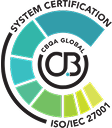Dokumentasi SNAP API Paydia
Selamat datang di Dokumentasi Paydia! Telusuri panduan dan referensi API kami untuk mengintegrasikan Paydia dengan cepat dan mudah.
Mengapa SNAP API Paydia?


Mudah Diintegrasikan
SNAP API dirancang agar mudah digunakan, dengan panduan langkah-demi-langkah dan kode contoh untuk mempercepat proses integrasi.


Aman & Terpercaya
Teknologi enkripsi terkini dan Fraud Detection System menjaga keamanan transaksi dari awal hingga akhir.
Buat Akun Paydia Bisnis

Fleksibel untuk Beragam Kebutuhan Bisnis
Dari UKM hingga perusahaan besar, SNAP API Paydia mendukung berbagai skala bisnis untuk mengoptimalkan layanan pembayaran.
Buat Akun SandboxSNAP API Product

QRIS
Permudah pelanggan untuk melakukan pembayaran dengan QRIS langsung di platform Anda. SNAP API QRIS menghadirkan proses transaksi yang cepat dan praktis.
Pelajari Lebih Lanjut
Disbursement (Transfer Dana)
Otomatiskan proses pencairan dana ke rekening pengguna atau mitra bisnis dengan Disbursement API kami, yang aman dan terpercaya untuk kebutuhan bisnis Anda.
Pelajari Lebih Lanjut
Account Linkage
Hubungkan akun e-money pengguna Anda dengan layanan Paydia untuk pengalaman pembayaran yang terintegrasi dan seamless di aplikasi Anda.
Pelajari Lebih LanjutDukungan Integrasi Paydia
Memberikan kemudahan dalam melakukan integrasi layanan Paydia sesuai dengan standar SNAP API. Hubungi tim kami yang selalu siap dalam membantu mengembangkan bisnis Anda.
Jam Operasional:
Senin - Jumat
08:00 - 17:00 WIB.
Hubungi Kami
Jam Operasional:
Senin - Jumat
08:00 - 17:00 WIB.
Hubungi Kami



